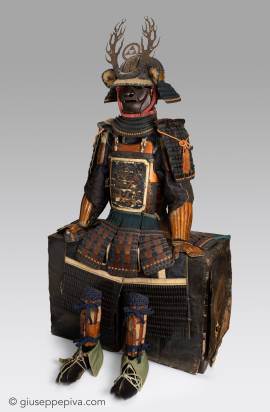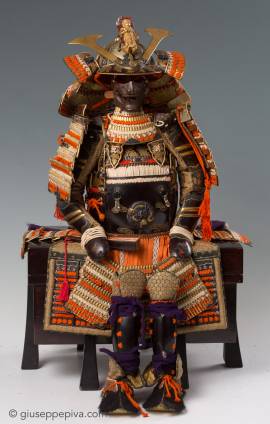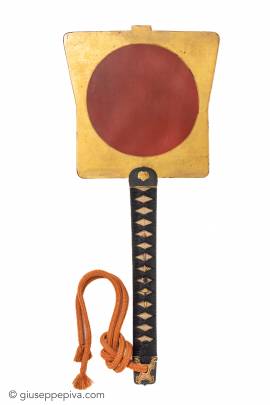PERIODMid Edo period (1615-1867), 18th century EXHIBITIONS"Samurai - Passato e Presente", Novara 2012LITERATUREG.Piva - S. Verrina, Samurai - Passato e Presente, cat. A2, Novara 2012 This authentic samurai armor of tosei gusoku type brings the coat of arms (kamon) with fish scale (uruko) design used by the Hirano clan, daimyō of Tawaramoto in Yamato province. The twelve-plates kabuto (helmet) of "pumpkin" shape (akoda-nari) is typical of this region, richly decorated with byakudan gold lacquer and...
WORKS FOR SALE
Miniature armor Ni-mai do tosei gusokuHeight: 50 cm 19th century During the 17th Century samurai families used to display a set of helmet and armor, weapons and banners outdoors on the Tango-no-Sekku Festival (The Boy’s Festival), held on the fifth day of the fifth month, designated as an important ceremonial day by the Edo Shogunate Government. Later in the Edo period these items, except for the banners, were moved indoor, on rooms facing the street. The style of displaying varied in accordance and the armors gradually became miniaturized, thus keeping splendid...
Iron war fan decorated with a rising sunEarly Edo period, 17th centuryLenght: 49 cmSignature: Iga no kami Minamoto Kanemichi伊賀守源包道 The gunbai uchiwa was a type of fixed fan used by generals and daimyō to signal orders during battles. It was frequently decorated with a large red sun in the center, in this case painted in red lacquer on a gold background, but some were also adorned with moon or planets designs as well as with kanji or bonji characters. During the Edo period, the gunbai came to be viewed as a symbol of power and status, as only high- ranking samurai would carry...
Copyright © 2016 - giuseppe piva - VAT: 05104180962










